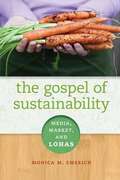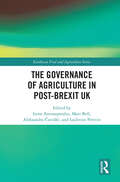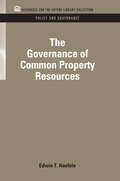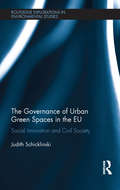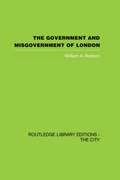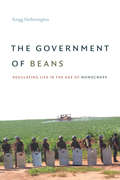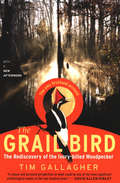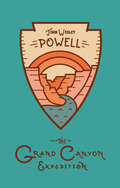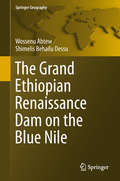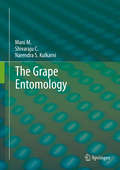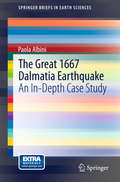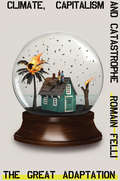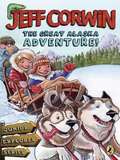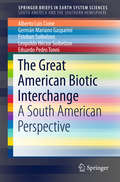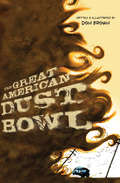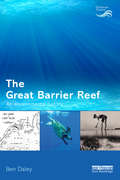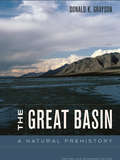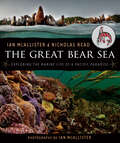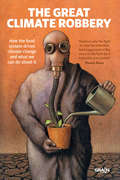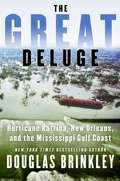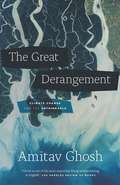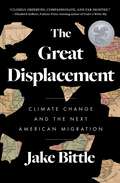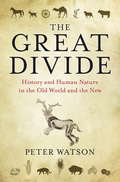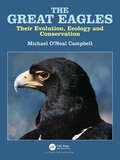- Table View
- List View
The Gospel of Sustainability: Media, Market and LOHAS
by Monica M. EmerichFrom organic produce and clothing to socially conscious investing and eco-tourism, the lifestyles of health and sustainability, or LOHAS, movement encompasses diverse products and practices intended to contribute to a more sustainable lifestyle for people and the planet. In The Gospel of Sustainability, Monica M. Emerich explores the contemporary spiritual expression of this green cultural shift at the confluence of the media and the market. This is the first book to qualitatively study the LOHAS marketplace and the development of a discourse of sustainability of the self and the social and natural worlds. Emerich draws on myriad sources related to the notions of mindful consumption found throughout the LOHAS marketplace, including not just products and services but marketing materials, events, lectures, regulatory policies, and conversations with leaders and consumers. These disparate texts, she argues, universally project a spiritual message about personal and planetary health that is in turn reforming capitalism by making consumers more conscious.
The Governance of Agriculture in Post-Brexit UK (Earthscan Food and Agriculture)
by Matt Bell Aleksandra Čavoški Ludivine Petetin Irene AntonopoulosThis book provides a multidisciplinary analysis of the impact of Brexit on British agriculture and associated areas, discussing the Common Agricultural Policy and the Agriculture Act 2020. The Brexit referendum provoked new debates and questions over the future of agriculture in Britain and the potential positive and negative impacts of Brexit on both farmers and consumers. These debates, as well as the ensuing proposals relevant to the Agriculture Act 2020, have exposed the multidimensional effects of Brexit when it comes to agriculture. With a focus on profitability, the rights of farmers, environmental protection, as well as animal welfare, this book brings together an interdisciplinary analysis of the future of British agriculture in post-Brexit Britain. More specifically, it addresses the criticisms over the Common Agriculture Policy, presents an analysis of the Agriculture Act 2020, and considers suggestions for future developments. Through this analysis, the book suggests a way towards the future, with a positive outlook towards a competitive and sustainable agriculture that will satisfy the needs of farmers and consumers while ensuring environmental protection, animal welfare, and rural development. This book will be of great interest to students and scholars of food and agricultural policy and politics, agroecology and rural development, as well as policymakers involved in Britain’s post-Brexit environmental policy.
The Governance of Common Property Resources (RFF Policy and Governance Set)
by Edwin T. HaefeleThe contributors explore the decision-making processes that surround environmental issues and attempt to provide realistic models for making policy decisions. Originally published in 1975
The Governance of Urban Green Spaces in the EU: Social innovation and civil society (Routledge Explorations in Environmental Studies)
by Judith SchicklinskiAcross European cities the use of urban space is controversial and subject to diverging interests. On the one hand citizens are increasingly aware of the necessity for self-organising to reclaim green spaces. On the other hand local authorities have started to involve citizens in the governance of urban green spaces. While an increased level of citizen participation and conducive conditions for citizens’ self-organisation are a desirable development per se, the risk of functionalising civil society actors by the local authority for neoliberal city development must be kept in mind. Drawing on qualitative and quantitative data collected in 29 European cities from all four European geographic regions, this book examines the governance of urban green spaces and urban food production, focusing on the contribution of citizen-driven activities. Over the course of the book, Schicklinski identifies best practice examples of successful collaboration between citizens and local government. The book concludes with policy recommendations with great practical value for local governance in European cities in times of the growth-turn. This book will be of great relevance to students, scholars, and policy-makers with an interest in environmental governance, urban geography, and sustainable development.
The Government and Misgovernment of London
by William A. RobsonThis book was first published in 1939.
The Government of Beans: Regulating Life in the Age of Monocrops
by Kregg HetheringtonThe Government of Beans is about the rough edges of environmental regulation, where tenuous state power and blunt governmental instruments encounter ecological destruction and social injustice. At the turn of the twenty-first century, Paraguay was undergoing dramatic economic, political, and environmental change due to a boom in the global demand for soybeans. Although the country's massive new soy monocrop brought wealth, it also brought deforestation, biodiversity loss, rising inequality, and violence. Kregg Hetherington traces well-meaning attempts by bureaucrats and activists to regulate the destructive force of monocrops that resulted in the discovery that the tools of modern government are at best inadequate to deal with the complex harms of modern agriculture and at worst exacerbate them. The book simultaneously tells a local story of people, plants, and government; a regional story of the rise and fall of Latin America's new left; and a story of the Anthropocene writ large, about the long-term, paradoxical consequences of destroying ecosystems in the name of human welfare.
The Grail Bird: The Rediscovery of the Ivory-billed Woodpecker
by Tim Gallagher&“The Grail Bird is an enjoyable read . . . A powerful call for conservation, and an exciting bird adventure&” (The Boston Globe). What is it about the ivory-billed woodpecker? Why does this ghost of the southern swamps arouse such an obsessive level of passion in its devotees, who range from respected researchers to the flakiest Loch Ness monster fanatics and Elvis chasers? Since the early twentieth century, scientists have been trying their best to prove that the ivory-bill is extinct. But every time they think they&’ve finally closed the door, the bird makes an unexpected appearance. To unravel the mystery, author Tim Gallagher heads south, deep into the eerie swamps and bayous of the vast Mississippi Delta, searching for people who claim to have seen this rarest of birds and following up—sometimes more than thirty years after the fact—on their sightings. What follows is his own Eureka moment with his buddy Bobby Harrison, a true son of the South from Alabama. A huge woodpecker flies in front of their canoe, and they both cry out, &“Ivory-bill!&” This sighting—the first time since 1944 that two qualified observers positively identify an ivory-billed woodpecker in the United States—quickly leads to the largest search ever launched to find a rare bird, as researchers fan out across the bayou, hoping to document the existence of this most iconic of birds. &“The Grail Bird is less an ecological study than a portrait of human obsession.&” —The New York Times
The Grand Canyon Expedition: The Exploration Of The Colorado River And Its Canyons
by John Wesley PowellThe geologist and explorer’s own account of his perilous venture into one of the last unmapped portions of the continental United States.Join John Wesley Powell’s expedition to explore one of the Seven Wonders of the Natural World, and one of the last unmapped portions of the continental United States. Powell’s detailed descriptions of the rocks, plants, and animals seen in the canyon; the geography of the area; his team’s interactions with native groups; and dangers and mishaps along the trail allow readers to feel the thrill, the awe, and the humility of standing on the canyon’s edge.After losing an arm in the Civil War, the young Powell took on an extraordinary challenge as he led a small team into this remarkable landscape. He would go on to become the director of the US Geological Survey and the Smithsonian, and is acknowledged today for his foresight on the importance of conserving natural resources—particularly water—as the nation rapidly expanded westward.“Powell’s ideas powerfully shaped development of the West’s water supply.” —Scientific American “He had entered the Grand Canyon as a pioneer, hoping that it could be exploited and settled, but the experience changed him. He realized that the presence of indigenous peoples, the landscape, water and ecosystems meant that it could not and should not be settled as the Eastern states had been. Now, as the Western states are threatened with a catastrophic water shortage, it is possible that he should be remembered not just as an explorer, but also as a prophet.” —BBC News Magazine
The Grand Ethiopian Renaissance Dam on the Blue Nile (Springer Geography)
by Wossenu Abtew Shimelis Behailu DessuThis book is about the Grand Ethiopian Renaissance Dam newly being built on the Blue Nile, a transboundary river. Due to rising population and increasing water demand in the Nile basin, major projects raise interest and concern by millions with potential for water conflict. The dam design, reservoir filling policy, operation of the dam, riparian countries response, dam site importance and social impact and economy of the dam are presented in the book.
The Grape Entomology
by M. Mani C. Shivaraju Narendra S. KulkarniIntensive and extensive cultivation of grapes (Vitis vinifera L. ) leads to serious pest problem in vineyards in major grape growing areas of the world. Climatic conditions in India are favorable for high production of table and wine grapes, and thus also for incidence of variety of pests. These include the sucking insect pests namely thrips, hoppers, mealybugs etc. , and beetle pests like stem borer, stem girdler, flea beetles, chafer beetles, shot hole borer and several lepidopteron, mites, nematodes and vertebrate pests. Pests of grapes in other countries relevant to Indian conditions are also dealt herewith since they may get introduced in India in future. Up to date information on biology, damage, seasonal development, management practices of the pests are covered in this book. Some of the pest management practices followed in other countries are also given, which will be useful to Indian conditions. Pesticide residue is a serious problem both for export and internal market in grapes. Guideline for pesticide residue management in grapes is also given in this book. The authors have tried to accommodate almost all the important information generated on the grape pests up to 2012. A complete list of grape pests (except disease) occurring in different grape growing regions of the world is also covered in this book which will be ready reckoner for the grape workers. The authors sincerely hope that this book will provide useful information to many entomologists, students working on grapes and the grape growers in the country. It is a pleasure to thank all those people who gave help, suggestions and encouragement in the preparation of our book "The Grape Entomology".
The Great 1667 Dalmatia Earthquake
by Paola AlbiniThis book seeks to provide a comprehensive reconstruction of the 1667 Dalmatia earthquake phenomenon on the basis of eyewitness testimony. At the same time, one of the distinctive features of this book is that the earthquake observations are treated and arranged in time and space so as to provide earthquake data on the macroseismic intensity, which might be used in seismic hazard and risk studies. On April 6, 1667 a devastating earthquake struck the southernmost region of Dalmatia (Croatia). Most of the affected area at that time belonged to the independent Republic of Ragusa, the capital of which was the town of Ragusa, today Dubrovnik. The 1667 earthquake left behind a lasting scar on the history and life of the Republic, as it was the catalyst of a serious financial crisis. Both the economic and more general consequences of this earthquake have been discussed in historiographical and seismological essays in late 20th-century works. This book seeks to provide a comprehensive reconstruction of the 1667 Dalmatia earthquake phenomenon on the basis of eyewitness testimony. At the same time, one of the distinctive features of this book is that the earthquake observations are treated and arranged in time and space so as to provide earthquake data on the macroseismic intensity, which might be used in seismic hazard and risk studies. The book is also intended as an extensive case history, which allows the author to include some guidelines on how to approach the study of a past earthquake and proceed to its full seismological interpretation. In this respect, a unique feature of the book is the comprehensive and detailed analysis of the original documentary sources in their proper context, effectively combining the interpretative approaches of history and seismology.
The Great Adaptation: Climate, Capitalism and Catastrophe
by Romain FelliWhen capitalism doesn't fight climate change but rather tries to make a buck out of itThe Great Adaptation tells the story of how scientists, governments and corporations have tried to deal with the challenge that climate change poses to capitalism by promoting adaptation to the consequences of climate change, rather than combating its causes. From the 1970s neoliberal economists and ideologues have used climate change as an argument for creating more "flexibility" in society, that is for promoting more market-based solutions to environmental and social questions. The book unveils the political economy of this potent movement, whereby some powerful actors are thriving in the face of dangerous climate change and may even make a profit out of it.
The Great Alaska Adventure!
by Jeff CorwinThis is the second book in Jeff Corwin's young middle-grade fiction series, which shows kids that no matter where you live, you can have fun discovering the plants, animals, and natural life around you. .
The Great American Biotic Interchange
by Alberto Luis Cione Germán Mariano Gasparini Esteban Soibelzon Leopoldo Héctor Soibelzon Eduardo Pedro TonniSouth American ecosystems suffered one of the greatest biogeographical events, after the establishment of the Panamian land bridge, called the "Great American Biotic Interchange" (GABI). This refers to the exchange, in several phases, of land mammals between the Americas; this event started during the late Miocene with the appearance of the Holartic Procyonidae (Huayquerian Age) in South America and continues today. The major phases of mammalian dispersal occurred from the Latest Pliocene (Marplatan Age) to the Late Pleistocene (Lujanian Age). The most important and richest localities of Late Miocene-Holocene fossil vertebrates of South America are those of the Pampean region of Argentina. There are also several Late Miocene and Pliocene localities in western Argentina and Bolivia. Other important fossils have been collected in localities of Pleistocene age outside Argentina: Tarija (Bolivia), karstic caves of Lagoa Santa and the recently explored caves of Tocantins (Brasil), Talara (Perú), La Carolina (Ecuador), Muaco (Venezuela), and Cueva del Milodon (Chile), among others. The book discusses basic information for interpreting the GABI such as taxonomic composition (incorporating the latest revisions) at classical and new localities for each stage addressing climate, environments, and time boundaries for each stage. It includes the chronology and dynamics of the GABI, the integration of South American mammalian faunas through time, the Quaternary mammalian extinctions and the composition of recent mammalian fauna of the continent.
The Great American Dust Bowl
by Don BrownA speck of dust is a tiny thing. In fact, five of them could fit into the period at the end of this sentence.On a clear, warm Sunday, April 14, 1935, a wild wind whipped up millions upon millions of these specks of dust to form a duster—a savage storm—on America's high southern plains. The sky turned black, sand-filled winds scoured the paint off houses and cars, trains derailed, and electricity coursed through the air. Sand and dirt fell like snow—people got lost in the gloom and suffocated . . . and that was just the beginning.Don Brown brings the Dirty Thirties to life with kinetic, highly saturated, and lively artwork in this graphic novel of one of America's most catastrophic natural events: the Dust Bowl.
The Great Barrier Reef: An Environmental History (Earthscan Oceans)
by Ben DaleyThe Great Barrier Reef is located along the coast of Queensland in north-east Australia and is the world's largest coral reef ecosystem. Designated a World Heritage Area, it has been subject to increasing pressures from tourism, fishing, pollution and climate change, and is now protected as a marine park. This book provides an original account of the environmental history of the Great Barrier Reef, based on extensive archival and oral history research. It documents and explains the main human impacts on the Great Barrier Reef since European settlement in the region, focusing particularly on the century from 1860 to 1960 which has not previously been fully documented, yet which was a period of unprecedented exploitation of the ecosystem and its resources. The book describes the main changes in coral reefs, islands and marine wildlife that resulted from those impacts. In more recent decades, human impacts on the Great Barrier Reef have spread, accelerated and intensified, with implications for current management and conservation practices. There is now better scientific understanding of the threats faced by the ecosystem. Yet these modern challenges occur against a background of historical levels of exploitation that is little-known, and that has reduced the ecosystem's resilience. The author provides a compelling narrative of how one of the world's most iconic and vulnerable ecosystems has been exploited and degraded, but also how some early conservation practices emerged.
The Great Basin: A Natural Prehistory (Revised and Expanded Edition)
by Donald K. GraysonCovering a large swath of the American West, the Great Basin, centered in Nevada and including parts of California, Utah, and Oregon, is named for the unusual fact that none of its rivers or streams flow into the sea. This fascinating illustrated journey through deep time is the definitive environmental and human history of this beautiful and little traveled region, home to Death Valley, the Great Salt Lake, Lake Tahoe, and the Bonneville Salt Flats. Donald K. Grayson synthesizes what we now know about the past 25,000 years in the Great Basin--its climate, lakes, glaciers, plants, animals, and peoples--based on information gleaned from the region's exquisite natural archives in such repositories as lake cores, packrat middens, tree rings, and archaeological sites. A perfect guide for students, scholars, travelers, and general readers alike, the book weaves together history, archaeology, botany, geology, biogeography, and other disciplines into one compelling panorama across a truly unique American landscape.
The Great Bear Sea: Exploring the Marine Life of a Pacific Paradise (Rapid Reads)
by Nicholas ReadThis amazing part of the northeast Pacific Ocean is home to some of the planet's mightiest and most beloved residents: whales, sea lions, dolphins, orcas, sea otters and wild salmon. Following up the success of their first two books about the Great Bear Rainforest, The Salmon Bears and The Sea Wolves, Ian McAllister and Nicholas Read take readers on an expedition into the wondrous and mysterious underwater world of the Great Bear Sea. Filled with spectacular images of this largely unknown part of the world, the book also explores the uncertain future of the Great Bear Sea in this age of climate change, overfishing, pipelines and oil tankers. Can a rainforest full of rare spirit bears, fishing wolves and great grizzlies survive without a Great Bear Sea to feed and nourish it?
The Great Climate Robbery: How the Food System Drives Climate Change and What We Can Do About It
by GRAINThe Great Climate Robbery connects analysis of the food system to larger issues affecting the planet, and link peoples’ struggles over food to climate change. This book will help readers to understand the ways in which corporations control the food system and provide the analysis needed to challenge this control.
The Great Deluge: Hurricane Katrina, New Orleans, and the Mississippi Gulf Coast
by Douglas BrinkleyIn the span of five violent hours on August 29, 2005, Hurricane Katrina destroyed major Gulf Coast cities and flattened 150 miles of coastline. But it was only the first stage of a shocking triple tragedy. On the heels of one of the three strongest hurricanes ever to make landfall in the United States came the storm-surge flooding, which submerged a half-million homes--followed by the human tragedy of government mismanagement, which proved as cruel as the natural disaster itself. In The Great Deluge, bestselling author Douglas Brinkley finds the true heroes of this unparalleled catastrophe, and lets the survivors tell their own stories, masterly allowing them to record the nightmare that was Katrina.
The Great Derangement: Climate Change and the Unthinkable (Berlin Family Lectures)
by Amitav GhoshAre we deranged? The acclaimed Indian novelist Amitav Ghosh argues that future generations may well think so. How else to explain our imaginative failure in the face of global warming? In his first major book of nonfiction since In an Antique Land, Ghosh examines our inability--at the level of literature, history, and politics--to grasp the scale and violence of climate change. The extreme nature of today's climate events, Ghosh asserts, make them peculiarly resistant to contemporary modes of thinking and imagining. This is particularly true of serious literary fiction: hundred-year storms and freakish tornadoes simply feel too improbable for the novel; they are automatically consigned to other genres. In the writing of history, too, the climate crisis has sometimes led to gross simplifications; Ghosh shows that the history of the carbon economy is a tangled global story with many contradictory and counterintuitive elements. Ghosh ends by suggesting that politics, much like literature, has become a matter of personal moral reckoning rather than an arena of collective action. But to limit fiction and politics to individual moral adventure comes at a great cost. The climate crisis asks us to imagine other forms of human existence--a task to which fiction, Ghosh argues, is the best suited of all cultural forms. His book serves as a great writer's summons to confront the most urgent task of our time.
The Great Displacement: Climate Change and the Next American Migration
by Jake BittleShortlisted for the 2024 Carnegie Medal for Excellence &“The Great Displacement is closely observed, compassionate, and far-sighted.&” —Elizabeth Kolbert, Pulitzer Prize–winning author of Under a White Sky The untold story of climate migration in the United States—the personal stories of those experiencing displacement, the portraits of communities being torn apart by disaster, and the implications for all of us as we confront a changing future.Even as climate change dominates the headlines, many of us still think about it in the future tense—we imagine that as global warming gets worse over the coming decades, millions of people will scatter around the world fleeing famine and rising seas. What we often don&’t realize is that the consequences of climate change are already visible, right here in the United States. In communities across the country, climate disasters are pushing thousands of people away from their homes.A human-centered narrative with national scope, The Great Displacement is &“a vivid tour of the new human geography just coming into view&” (David Wallace-Wells, New York Times bestselling author of The Uninhabitable Earth). From half-drowned Louisiana to fire-scorched California, from the dried-up cotton fields of Arizona to the soaked watersheds of inland North Carolina, people are moving. In the last few decades, the federal government has moved tens of thousands of families away from flood zones, and tens of thousands more have moved of their own accord in the aftermath of natural disasters. Insurance and mortgage markets are already shifting to reflect mounting climate risk, pricing people out of risky areas. Over the next fifty years, millions of Americans will be caught up in this churn of displacement, forced inland and northward in what will be the largest migration in our country&’s history. The Great Displacement compassionately tells the stories of those who are already experiencing life on the move, while detailing just how radically climate change will transform our lives—erasing historic towns and villages, pushing people toward new areas, and reshaping the geography of the United States.
The Great Divide: History and Human Nature in the Old World and the New
by Peter WatsonHow the division of the Americas from the rest of the world affected human history.In 15,000 B.C. early humankind, who had evolved in Africa tens of thousands of years before and spread out to populate the Earth, arrived in Siberia, during the Ice Age. Because so much water was locked up at that time in the great ice sheets, several miles thick, the levels of the world's oceans were much lower than they are today, and early humans were able to walk across the Bering Strait, then a land bridge, without getting their feet wet and enter the Americas. Then, the Ice Age came to an end, the Bering Strait refilled with water and humans in the Americas were cut off from humans elsewhere in the world. This division - with two great populations on Earth, each oblivious of the other - continued until Christopher Columbus 'discovered' America just before 1500 A.D. This is the fascinating subject of THE GREAT DIVIDE, which compares and contrasts the development of humankind in the 'Old World' and the 'New' between 15,000 B.C. and 1500 A.D. This unprecedented comparison of early peoples means that, when these factors are taken together, they offer a uniquely revealing insight into what it means to be human.THE GREAT DIVIDE offers a masterly and totally original synthesis of archaeology, anthropology, geology, meteorology, cosmology and mythology, to give a new shape - and a new understanding - to human history.
The Great Divide: History and Human Nature in the Old World and the New
by Peter WatsonHow the division of the Americas from the rest of the world affected human history.In 15,000 B.C. early humankind, who had evolved in Africa tens of thousands of years before and spread out to populate the Earth, arrived in Siberia, during the Ice Age. Because so much water was locked up at that time in the great ice sheets, several miles thick, the levels of the world's oceans were much lower than they are today, and early humans were able to walk across the Bering Strait, then a land bridge, without getting their feet wet and enter the Americas. Then, the Ice Age came to an end, the Bering Strait refilled with water and humans in the Americas were cut off from humans elsewhere in the world. This division - with two great populations on Earth, each oblivious of the other - continued until Christopher Columbus 'discovered' America just before 1500 A.D. This is the fascinating subject of THE GREAT DIVIDE, which compares and contrasts the development of humankind in the 'Old World' and the 'New' between 15,000 B.C. and 1500 A.D. This unprecedented comparison of early peoples means that, when these factors are taken together, they offer a uniquely revealing insight into what it means to be human.THE GREAT DIVIDE offers a masterly and totally original synthesis of archaeology, anthropology, geology, meteorology, cosmology and mythology, to give a new shape - and a new understanding - to human history.
The Great Eagles: Their Evolution, Ecology and Conservation
by Michael O'Neal CampbellThis book examines the current literature and knowledge on the evolution and ecology of all the birds named as eagles, with particular emphasis on the larger species. It also examines the past and current relations between eagles and people, including habitat change and conservation issues. Eagle ecologies and conservation are currently seriously impacted by human activities such as industrialization, urbanization, pollution, deforestation and hunting. Some eagle species have consequently experienced extreme population changes. There are, however, some positive developments. Eagles have a strong, historic bond with human civilization, due to their status as the world’s most charismatic birds. Conservation policies have also been successful in repopulating some ecosystems with breeding eagles. Therefore, despite the complexity of this relationship, there may yet be hope for this unique species group, frequently rated as the kings of birds, and symbolic of human power, ambition, royalty, nationality, and even concepts of God. It is hoped that this book will contribute to the further understanding of these unique and fantastic birds.
